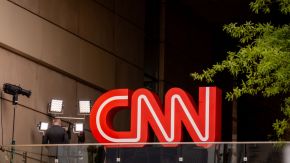Dollar General Corp this week returned to investment grade territory when Standard & Poor's upgraded its rating by one notch to BBB-minus.
The action was hardly a shocker - Dollar was on the agency's latest list of rising stars, fallen angels published on April 9, one of 23 global companies that were poised for a return to high grade. S&P had placed the company on CreditWatch with positive implications back in March.
But the upgrade is also the result of the company's robust sales, expectations for future growth as well as its commanding market position as a discount retailer.
Dollar has also impressed Moody's enough for a recent ratings upgrade, with the agency welcoming an improvement in credit metrics and changes to its capital structure via refinancing and a reduction of private equity ownership.
That strategy has translated well not only with ratings agencies, but bank analysts too.
"Dollar General's revolutionary retail-innovations, ample square footage growth potential and strong management execution continue to deliver out-sized market share gains," Bank of America Merrill Lynch analysts said in a recent note.
As the largest dollar-store chain in the United States with around 10,000 stores, Dollar is proving itself to be a promising credit story.
Unlike many others in its sector, it has thrived during the economic downturn, pulling in 2011 revenues of around $15bln.
Its outlets offer a variety of everyday items, including consumables, seasonal, home products and apparel, a diverse range that has facilitated quarter after quarter of earnings growth. That in turn has helped it garner ratings upgrades from all three major ratings agencies.
Dollar has aggressively deleveraged since its November 2009 initial public offering, benefiting not only its credit metrics, but helping push earnings growth as well.
BofA analysts note an impressive decline in Debt/EBITDAR, or Earnings before Interest, Tax, Depreciation, Amortization and Restructuring or Rent Costs, from 6.8 times in 2007 to 2.5 times in 2011.
Dollar's total debt declined from $4.3bln to $2.6bln in the time frame as well, said the analysts. This efficiency allowed Dollar to concentrate on share repurchases and debt financing which were conducted in concert with a major shareholder, Buck Holdings LP.
The effort to pare the private equity stake resulted in Moody's upgrading the retailer to Ba1 in April. Through a share buyback, greenshoe and secondary offering, Dollar was able to trim the Buck Holdings stake from around 52% to around 44%.
The move also triggered a shift in the composition of its board of directors -- KKR no longer comprises the majority. Buck Holdings is controlled by Kohlberg Kravis Roberts.
That's a positive development, according to Moody's, especially if the shift in the board over the next year to year-and-a-half supports conservative financial policies.
AMEND & EXTEND
Back in 2007, Moody's slashed Dollar a full six notches into junk territory to B3. The downgrade was due to an uptick in leverage which constrained its free cash flow. KKR had acquired the retailer that year in a $7.3bln leveraged buyout offer which included the assumption of $380mln in debt.
BofA analysts also view the private equity stake reduction constructively and said the move will be beneficial to borrowing costs on its $450mln senior subordinated notes.
The company has already said it would repurchase the notes via cash from operations or refinance on the first call date in July 2012. BofA factored in an interest rate of 6.5% (from 11.875%) on the notes and forecast incremental earnings of $0.04 in 2013 and 2014 respectively.
The instrument, maturing in July, 2017, has traded down modestly in price to $107.75 from $108.625 in early April.
Other credit positives include an amend & extend of a term loan by three years to July 2017. The spread on the extension was the same as a non-extended term loan due in July 2014, which are covenant-lite, or less restrictive, according to Reuters Loan Pricing Corp.
This progress supports upcoming capital expenditures as debt reduction is expected to be on the backburner through 2014. Over the next year, Dollar expects to open 625 stores with 50 of them in California.
BofA believes there is ample opportunity for Dollar to expand further as dollar stores in general represent about 1.5% of total retail sales in a $56bln industry.
Conditions for additional growth are good, given a whole group of new potential customers, including older consumers and higher income consumers who could be drawn in with ascetically pleasing layouts and the addition of well-known brands.
Moreover, the analysts point out, Dollar, which has touted itself as "serving the underserved," particularly in rural areas and in the South, could make a significant mark in the western United States as opportunities for new stores exist in areas defined by the USDA as "existing food deserts".
The analysts do concede that Dollar typically sells traditional convenience and some staple foods, and not usually fresh items.
The expansion in potentially underserved markets as well as its strategy of keeping its prices in line with cost increases will help position it in the longer run, Barclays said in a note.
And while longer term debt reduction might be deferred in lieu of share buybacks, Barclays says the company's solid free cash flow of around $536mln in 2011, and estimates of $643mln in 2012 and $949mln in 2014, will allow for a reduction of its approximately $2.5bln in debt and buttress earnings per share growth.















